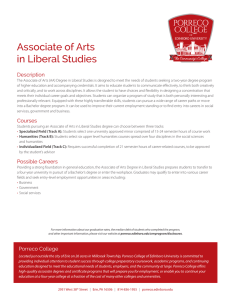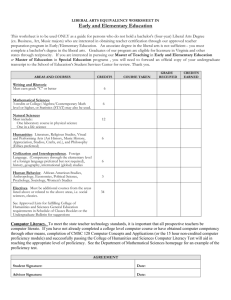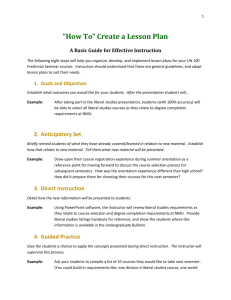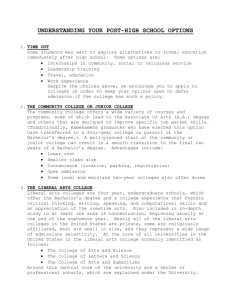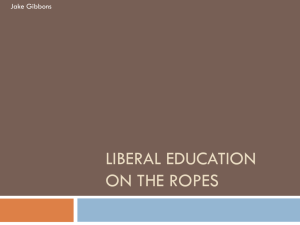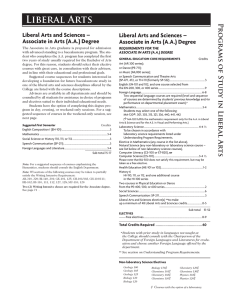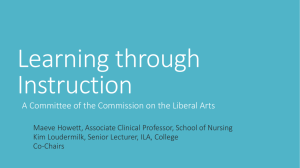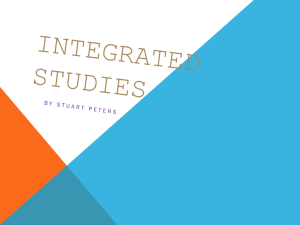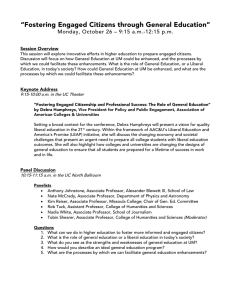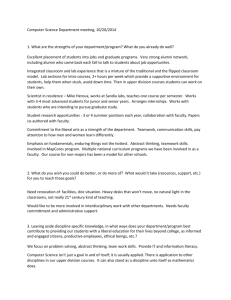NYSED`S Definition of liberal arts and sciences
advertisement
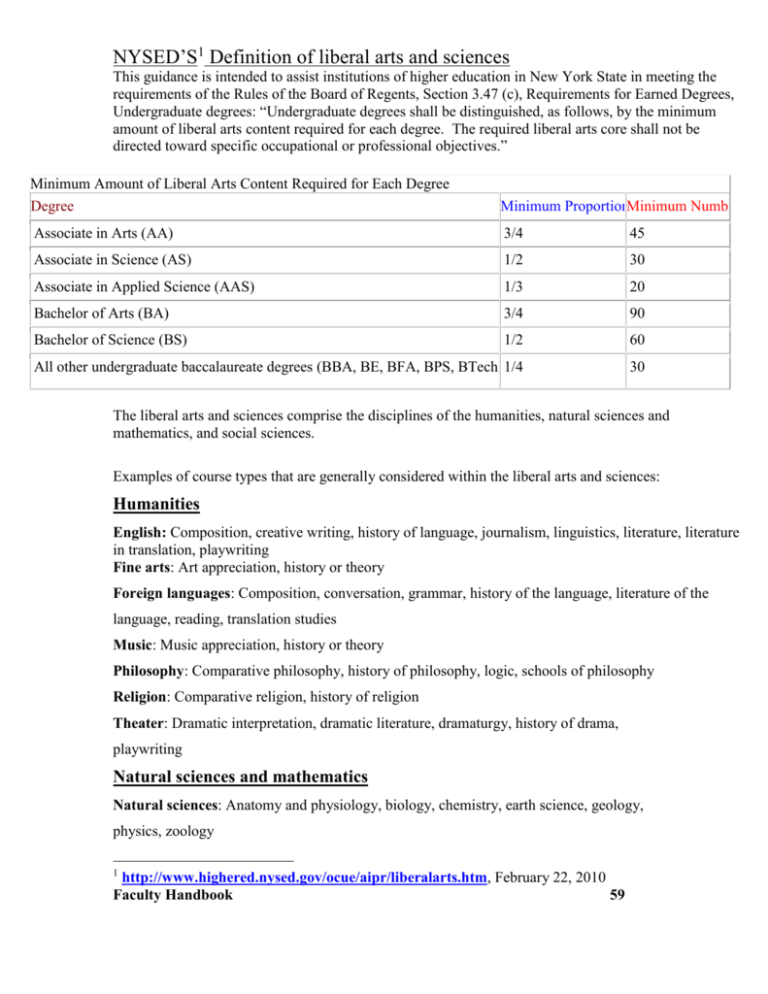
NYSED’S1 Definition of liberal arts and sciences This guidance is intended to assist institutions of higher education in New York State in meeting the requirements of the Rules of the Board of Regents, Section 3.47 (c), Requirements for Earned Degrees, Undergraduate degrees: “Undergraduate degrees shall be distinguished, as follows, by the minimum amount of liberal arts content required for each degree. The required liberal arts core shall not be directed toward specific occupational or professional objectives.” Minimum Amount of Liberal Arts Content Required for Each Degree Degree Minimum ProportionMinimum of ContentNumber of C Associate in Arts (AA) 3/4 45 Associate in Science (AS) 1/2 30 Associate in Applied Science (AAS) 1/3 20 Bachelor of Arts (BA) 3/4 90 Bachelor of Science (BS) 1/2 60 All other undergraduate baccalaureate degrees (BBA, BE, BFA, BPS, BTech, 1/4 etc.) 30 The liberal arts and sciences comprise the disciplines of the humanities, natural sciences and mathematics, and social sciences. Examples of course types that are generally considered within the liberal arts and sciences: Humanities English: Composition, creative writing, history of language, journalism, linguistics, literature, literature in translation, playwriting Fine arts: Art appreciation, history or theory Foreign languages: Composition, conversation, grammar, history of the language, literature of the language, reading, translation studies Music: Music appreciation, history or theory Philosophy: Comparative philosophy, history of philosophy, logic, schools of philosophy Religion: Comparative religion, history of religion Theater: Dramatic interpretation, dramatic literature, dramaturgy, history of drama, playwriting Natural sciences and mathematics Natural sciences: Anatomy and physiology, biology, chemistry, earth science, geology, physics, zoology 1 http://www.highered.nysed.gov/ocue/aipr/liberalarts.htm, February 22, 2010 Faculty Handbook 59 Mathematics: Calculus, mathematical theory, statistics Computer Science: Broad survey/theory courses Social sciences Anthropology, cultural studies, economics, geography, government, history, political science, psychology, sociology Criminal justice: Introductory and broad survey courses Communications: Interpersonal communication, mass communication, public speaking, speech and rhetoric Examples of course types that are generally not considered within the liberal arts and sciences: Agriculture Business: Administration, finance, human resources, management, marketing, production Computer applications: Word processing, database, spreadsheet, programming (e.g., specific languages) Health and physical education Home economics Education and teaching methods Library science Music: Studio, performance, practice courses—voice, instrument, direction, conducting Office technologies and practice Performing and related art: Acting, costume design, dance, direction, lighting, production, scene construction, sound production Specialized professional courses : Accounting, architecture, dental hygiene, dentistry, engineering, law, medicine, nursing, nutrition, pharmacy, podiatry, veterinary medicine Studio art: Drawing, painting, ceramics, sculpture Technology/technician fields: Construction, data processing, electrical, electronics, graphic arts, mechanical, medical, refrigeration repair Television: Television and radio production Theology: Pastoral counseling, ministry Faculty Handbook 60
